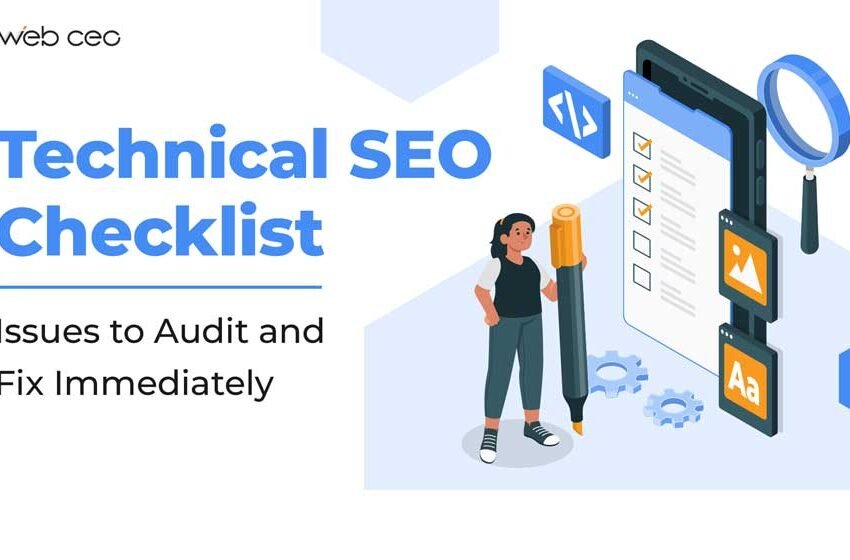Simple Steps to Fix Common Technical SEO Issues for Better Rankings

Why Technical SEO Matters
Technical SEO forms the silent engine powering a website’s progress in search. While content and backlinks are essential, a site can’t perform up to its potential if search engines can’t access, understand, or trust its structure. Architecture, speed, or indexation issues can quietly undermine all your best marketing efforts. By addressing fundamental concerns through technical SEO services, site owners create a strong foundation that allows high-quality content and well-earned links to shine.
Numerous case studies underline the ROI of technical site improvements: according to research from Search Engine Land, sites that invest in technical SEO frequently experience surges in organic search traffic of 20% or more within a few months of resolving underlying errors. When algorithms change—as Google often does—having clean technical SEO keeps you resilient. In a digital world where over 90% of online experiences start with a search engine, neglecting these fundamentals can easily mean getting lost in the noise, even with the best content.
Frequent Technical SEO Issues Found on Most Sites
Across industries, inevitable technical SEO mistakes happen repeatedly, impacting everything from user experience to search rankings. For example, site crawlers routinely discover broken links—both internal and outbound—which frustrate users and send negative signals to Google about the site’s upkeep. Similarly, duplicate content and missing or misapplied canonical tags can confuse search engines and dilute your site’s ranking authority.
A slow-loading website can quickly drive visitors away, particularly on mobile devices. HubSpot’s review of optimization techniques highlights that even a one-second delay in page load time can drop conversion rates by 7% and increase bounce rates. Other pitfalls include poor mobile performance, which is especially devastating in a mobile-first indexing era, and problems with robots.txt or malfunctioning XML sitemaps, which can leave valuable pages out of the index. Finally, running your site on HTTP instead of HTTPS risks security and may signal to Google that your site is outdated, impacting your search presence.
While each of these problems can be fixed independently, they can collectively erode trust with users and algorithms. The good news is that fixing them often results in a noticeable step up in search rankings and engagement.
Diagnosing Problems: Where to Start
Getting a handle on technical SEO begins with understanding where your site stands. A technical site audit acts as your roadmap. This typically starts by running your website through automated crawlers—like Google Search Console, Screaming Frog, or Sitebulb—that mimic how search engines interact with your pages. These tools quickly flag broken links, duplicate titles, crawl errors, and loading bottlenecks, making it simple to see which issues have the most significant impact.
Once your audit is complete, focus on the most disruptive problems first. High-priority items usually include crawl errors (e.g., a high number of 404s), mobile usability flaws, and unindexed key pages. A well-executed audit doesn’t just list problems but helps you prioritize which to attack for the best ROI. Making data-driven repairs is much faster and more effective than guessing what might be broken.
Actionable Steps to Resolve Top Technical SEO Errors
1. Fix Broken Links
Internal and outbound links that point to 404 errors harm user journeys, cut off link equity, and can impact crawling. Use site crawlers to detect dead links and update or redirect them to relevant resources. Not only does this improve user satisfaction, it also signals to search engines that your site is actively maintained.
2. Enhance Page Speed
Website speed is a confirmed Google ranking factor and directly shapes how long visitors stay on your pages. Run regular checks using Google PageSpeed Insights to spot heavy images, bloated scripts, or excessive CSS. Standard solutions include compressing images, minifying code, leveraging browser caching, and using a content delivery network (CDN). As noted in recent industry studies, high-performing sites often move up the rankings simply because they deliver content faster.
3. Address Duplicate Content
Google wants each page in its index to provide unique value. If your site features multiple pages with similar or overlapping content, use unique title tags, meta descriptions, and canonical tags to point search engines to the “main” version. This prevents duplication penalties and ensures hard-earned links aren’t spread too thin across near-identical pages.
4. Optimize for Mobile
With over half of global searches now on mobile, Google’s mobile-first approach impacts almost every site. Use the Mobile-Friendly Test to assess your site’s usability on smartphones and tablets. Check for readable text, appropriately spaced elements, and fast load times. Making your website responsive can yield higher engagement and better rankings among mobile users.
5. Secure Your Site
Migrating to HTTPS is no longer optional. Secure sites are weighted more favorably in search results, signaling trust and authority. Acquire and install an SSL certificate, renew it regularly, and update all internal and canonical links to the secure protocol. Even small sites can benefit from this level of security and the peace of mind it brings users.
Recommended Tools and Resources
Having the right technical SEO tools can dramatically speed up the discovery and remediation of site issues. Trusted resources such as Google Search Console monitor for indexing and coverage problems and can alert you to spikes in crawl errors or manual actions. Crawlers like Screaming Frog or Sitebulb dig deeper into the site structure, flagging broken links, duplicate content, missing alt tags, and more.
Use Google PageSpeed Insights to analyze the loading performance of key pages, understanding what slows them down and how to fix specific elements. Run regular checks with the Mobile-Friendly Test tool to ensure that your site is accessible to users on every device. For a practical, hands-on walk-through of these and other methods, the technical SEO tutorial by Search Engine Land offers actionable tips for webmasters at every skill level.
Keeping Your Site Healthy: Ongoing Technical SEO Maintenance
Technical SEO isn’t just a one-off project. Websites evolve—pages move, new content is added, and external links can break. What’s working now might not be enough next quarter, especially after a redesign, migration, or major content update. That’s why scheduling recurring technical maintenance is essential.
A quarterly technical audit suits most websites, ensuring you catch and correct issues before they snowball. Sites that grow quickly or rely heavily on organic traffic, like news publishers or e-commerce brands, may want to review site health monthly. Ongoing maintenance preserves the ranking improvements you achieve and protects your site from future algorithm updates or unexpected drops in visibility.
Frequently Asked Questions
- How often should a technical SEO audit be performed?
- It’s recommended that most websites be audited at least once per quarter. For those launching frequent new content or running large, complex sites, monthly audits are a wise choice to preempt major issues.
- Is technical SEO only relevant for big or complex websites?
- Every site, regardless of size, can suffer from technical mishaps. Smaller sites with just a few pages can miss out on search traffic due to simple, fixable errors.
- What technical issues usually have the most significant ranking impact?
- The most critical fixes usually relate to site speed, crawlability (making sure Google can access all your essential pages), and mobile usability. Each of these directly influences your search rankings and visitors’ experience.
- Can these technical fixes be handled without hiring an expert?
- Following tutorials and best practices can address many common issues, like fixing broken links or speeding up your site. However, larger projects, such as site migrations or complex template issues, often require expert assistance for optimal results.
Technical SEO is a critical aspect of digital success. By developing a habit of regular audits and timely fixes, site owners of all backgrounds can enjoy consistent, long-term growth in organic visibility and user engagement. Start with the basics, use the best tools, and make technical SEO a regular part of your website’s routine maintena





